TABLE OF CONTENTS
Processor naming schemes sure can get chaotic, and that holds true for both Intel and AMD.
For this particular piece, we’ll focus solely on “team blue” and their versatile – and most alluring – product stack.
Their processors always follow a very particular nomenclature and, depending on the model, they might have a suffix at the end.
K, F, and KF processors all warrant a bit of our attention as they all serve different purposes (and are sold at different price points, too).
It is, therefore, imperative to know what their biggest differences are to make an informed purchasing decision.
So, with these preliminaries in the rearview mirror, let’s begin!
Intel CPU Terminology – What Do the Suffixes K, F, and KF Mean?
Not all Intel CPUs are made equal. Some of them can be overclocked and tinkered with; others, however, omit certain features (like integrated graphics, for instance).
So, needless to say, you really ought to read the “fine print” before pulling out your wallet and making an investment!
Regular Intel processors – the ones without any kind of suffix – are easy to grasp and understand.

Image-Credit: Intel
The ones that do have a letter at the end, the “Product line suffix” as Intel calls it in the above image, however, are wholly unique in regards to what they offer (or, conversely, exclude).
Intel F Processors – No Onboard Graphics
If the CPU you’re interested in has an F” at the end, know that it’ll come without an integrated graphics card (or iGPU, for short).
This might not sound like all that big of a deal if you plan on running a dedicated GPU in your build, but it’s still something worth keeping in mind.
Today’s iGPUs are actually fairly capable and are totally sufficient for most use-cases. Plus, if your dedicated graphics card happens to malfunction (for whatever reason), having an iGPU for troubleshooting can end up being a life-saver.
Seeing as they don’t have any integrated graphics, F-series CPUs are always a bit cheaper than their regular counterparts. The difference in price, however, is most often negligible.
Fun fact: A lot of these CPU variants are due to manufacturing defects in the factory. If the silicon has a defect in an area where the iGPU is situated, well, they just make it a feature and sell it as an “F” CPU.
Intel K Processors – Overclocking Galore
K variants from Intel are typically the most expensive ones. Why, you might ask? Well, for starters, they all feature integrated graphics by default.
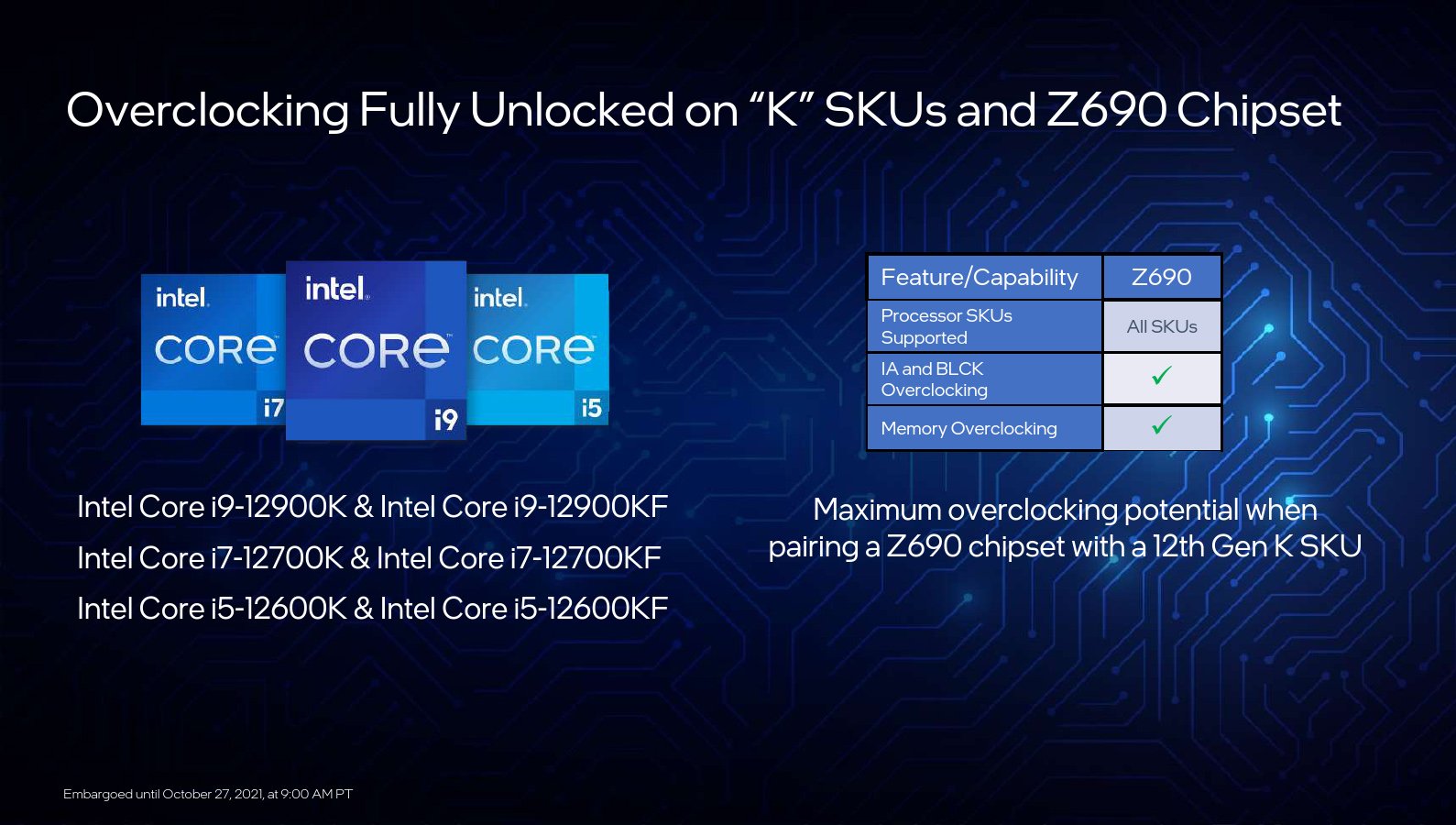
Source: Intel
More importantly, however, they have unlocked core frequencies which means you can overclock them (to a certain extent, of course) and get much better performance than from regular “base” models – depending on your cooling solution.
You will, however, need a motherboard that supports overclocking – a Z-series chipset, like the Z690, for instance. That, too, is something worth keeping in mind.
Intel KF Processors – Overclocking But No iGPU
KF variants, as the name implies, are a combination of the two – and a most peculiar one at that.
They’re unlocked but come without integrated graphics. And so, as a result, they’re typically cheaper than their K counterparts but also pricier than base and F variants.
Intel CPUs With No Markings
Last but certainly not least, we have regular Intel CPUs with no markings whatsoever – like the Intel Core i5-12700.
The lack of any suffix means it’s a standard CPU that will not allow for overclocking. These will come with an iGPU, though, so they’re undoubtedly the most “balanced” option as far as “team blue” and their processors are concerned.
Many non-K CPUs do have decreased clock speeds and boost-frequencies, though, so do beware of that. Sometimes buying a K CPU, even if you’re not planning to do any manual overclocking, will still net you a faster CPU thanks to higher stock clock- and boost-frequencies.
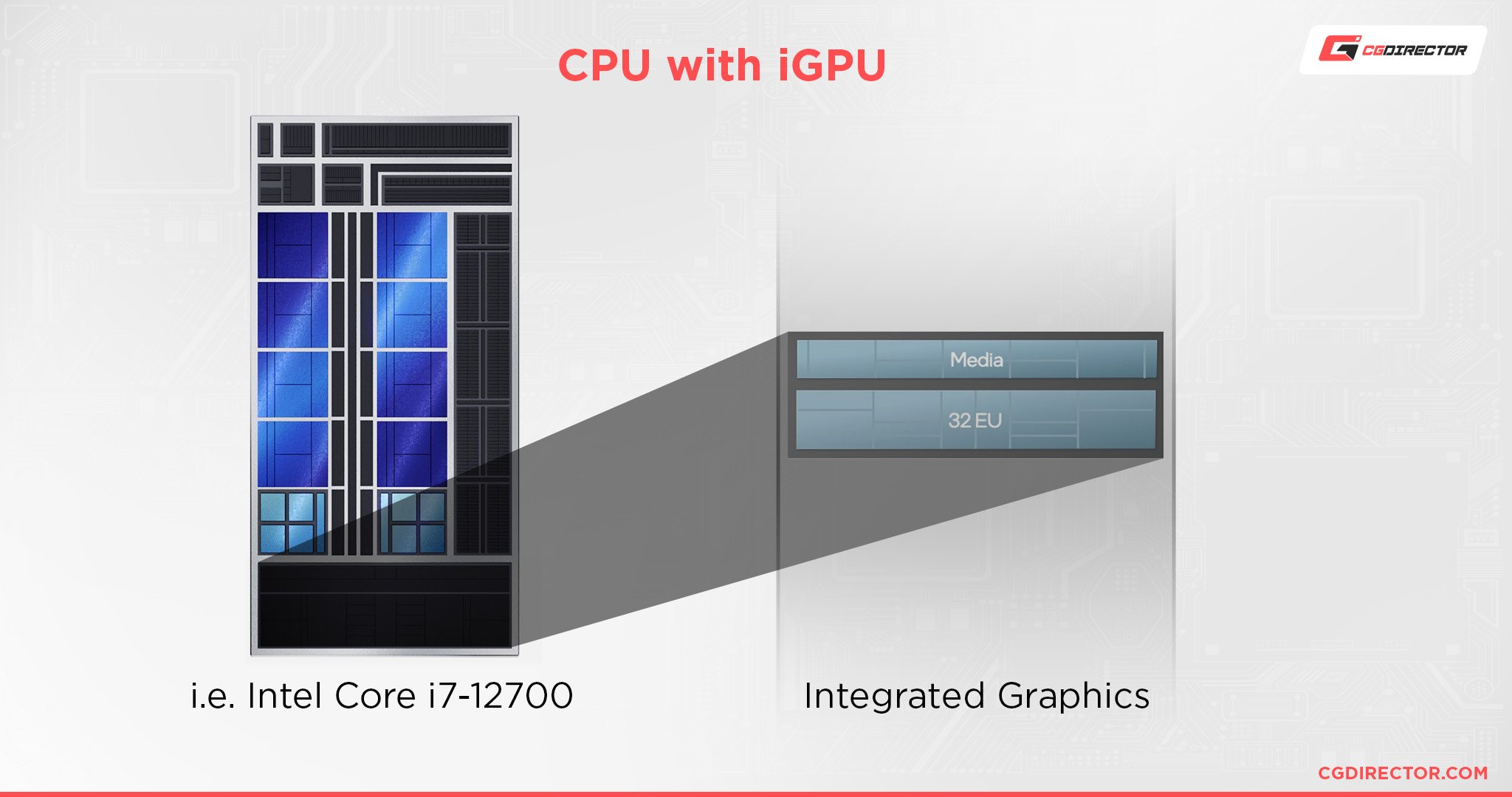
Source: Intel
The following table has all the information you might need:
Intel CPU Naming Suffix Overview Table
| Suffix | CPU Example | Overclockable | Integrated Graphics | Stock Frequencies |
|---|---|---|---|---|
| No Suffix | Intel Core i7-12700 | No | Yes | Reduced |
| K | Intel Core i7-12700K | Yes | Yes | Higher |
| F | Intel Core i7-12700F | No | No | Reduced |
| KF | Intel Core i7-12700KF | Yes | No | Higher |
Which Intel CPUs are the Cheapest?
Intel processors with different suffixes are always sold at different price points.
K variants are the most expensive, followed by KF models and then the regular “base” ones without any suffixes.
F-series CPUs are always the cheapest, but they offer no overclocking whatsoever. They also don’t have integrated graphics which means you’ll need to supply your own.
That, however, is by no means an issue seeing how F-series CPUs are mostly targeted at gamers and industry professionals who already have their own graphics cards (or plan on buying them anyway).
Additional Letter Markings on Intel CPUs
K, F, and KF are the most common markings on Intel Core processors; they take up a large portion of their product portfolio (primarily on the desktop side of things, although K-series CPUs can also be found on top-of-the-line mobility chips).
They’re not, however, the only markings out there – Intel has a bunch more, all of which are still used for various different devices and form factors including laptops, tablets, AIOs, and so on.
Here’s a quick rundown:
| Intel Processor Markings – A Full Breakdown | |
|---|---|
| E | Embedded processors |
| G | Discrete graphics on package |
| H | High-performance mobile processors |
| HK | High-performance and unlocked mobile processors |
| HQ | High-performance quad-core mobile processors |
| S | Special Edition |
| KS | Higher-performing versions of normal Intel K CPUs |
| T | Power-optimized (lower wattage than standard models) |
| U | Mobile power-efficient processors (typically for ultrabooks and tablets) |
| Y | Ultra-low power processors |
| X/XE | Extreme, high-end and unlocked processors |
| B | Ball Grid Array (BGA) |
| G1 through G7 | Graphics level (on Intel 10th and 11th Gen CPUs) |
Summary
If you’re in a rush and just want to get the nitty-gritty at a quick glance, here’s a recap that briefly summarizes the most important details and differences between the three most common Intel CPU markings: K, F, and KF.
- K-series processors are unlocked and can be overclocked so as to attain better performance.
- F-series processors don’t have integrated graphics which means you’ll have to use a dedicated GPU right from the very start. They are slightly cheaper, though.
- KF CPUs are unlocked but still come without integrated graphics. They are cheaper than their K counterparts but offer the same performance.
If you don’t need an iGPU and want as much power as you can get (for a relatively reasonable amount of money), KF-series processors are definitely the way to go.
FAQ
Let’s go over a few potential questions you might have regarding K-, F-, and KF-series CPUs from Intel:
Are Intel K CPUs Faster than their Non-K Variants?
They are faster by default as they most often have higher base/boost clock speeds.
This, in addition to the fact that they can be overclocked, can result in a very tangible performance uplift.
To fully harness the potential of a K-series CPU, however, you’ll need a sufficiently capable cooling solution and a Z-Series Motherboard, so just keep that in mind.
Do I Need to Pair an Intel KF or F CPU with a Dedicated GPU?
If you’re going to be using either a KF- or F-series CPU from Intel, you will need to pair them with a dedicated graphics card.
Which Intel CPUs are the Cheapest – F, KF, or K?
Intel CPUs with the F suffix are the cheapest of the bunch.
That’s because they don’t have any working integrated graphics, which makes them a, in part, defective CPU (at least the iGPU is not working) – hence the lower price tag.
Over To You
Intel processor markings sure can seem overwhelming, what with there being so many of them.
Fortunately, there’s a method behind the madness! Are you currently sporting an Intel CPU and, if so, which one? Let us know in the comments below and, in case you need any help, head over to our forum!
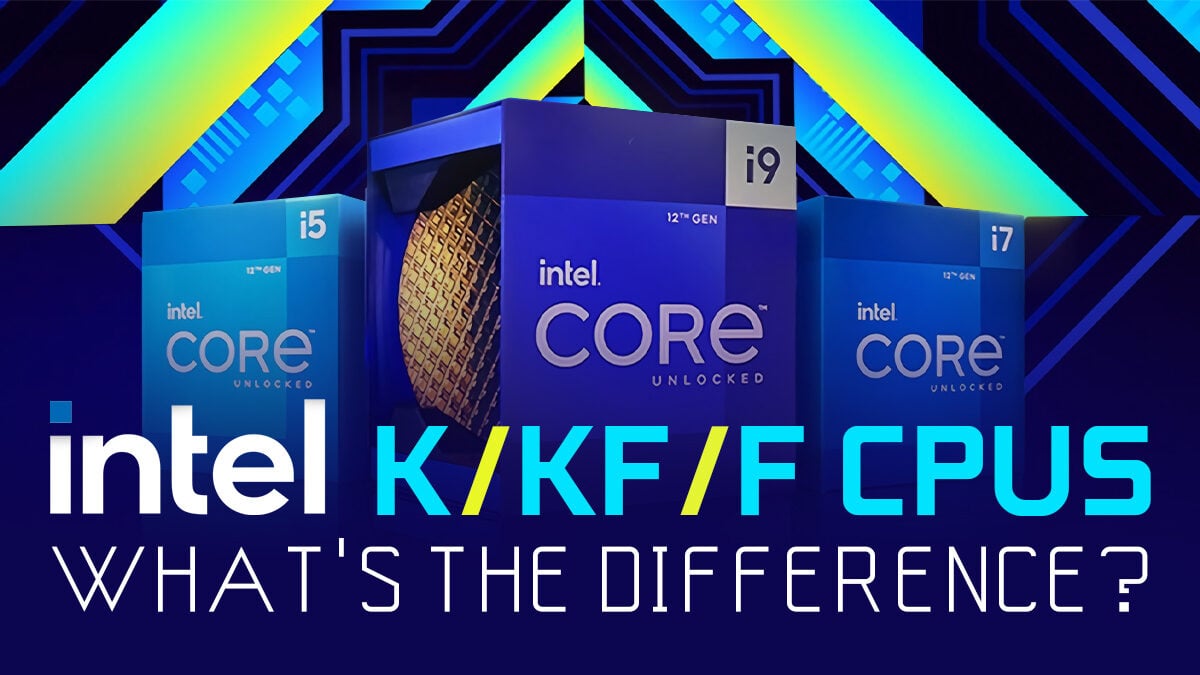
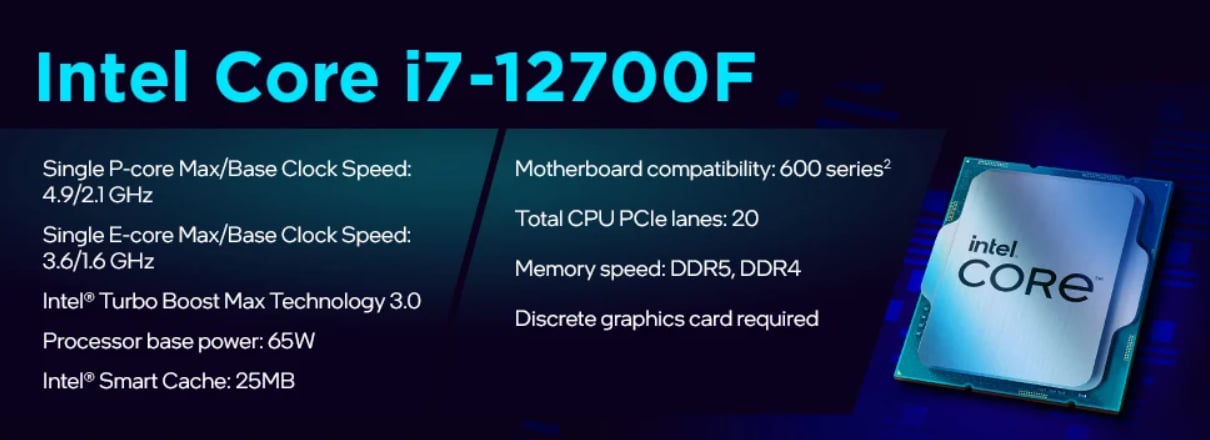
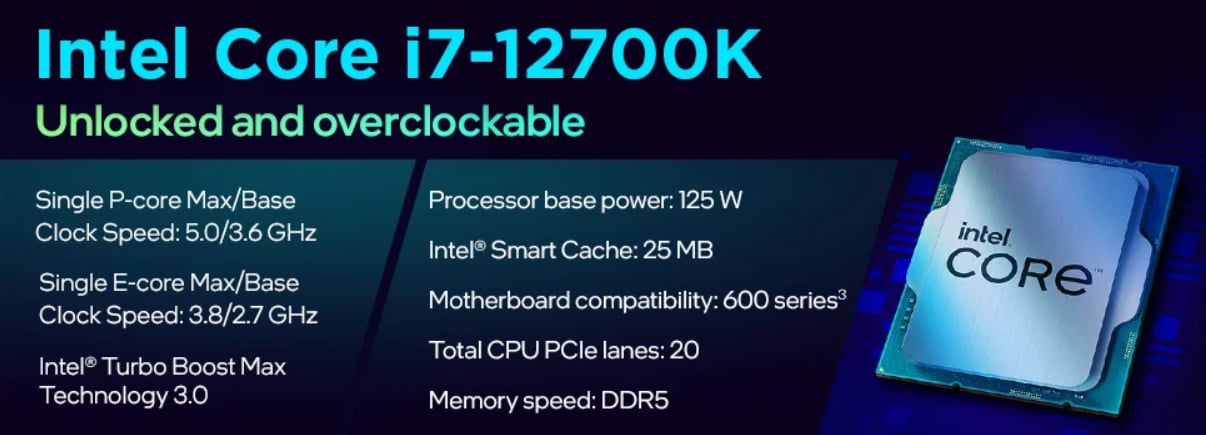
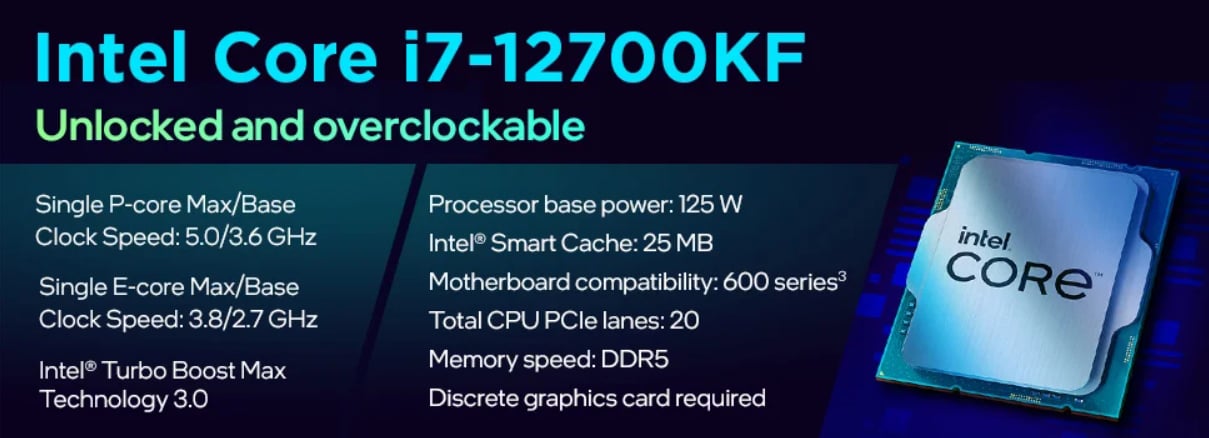
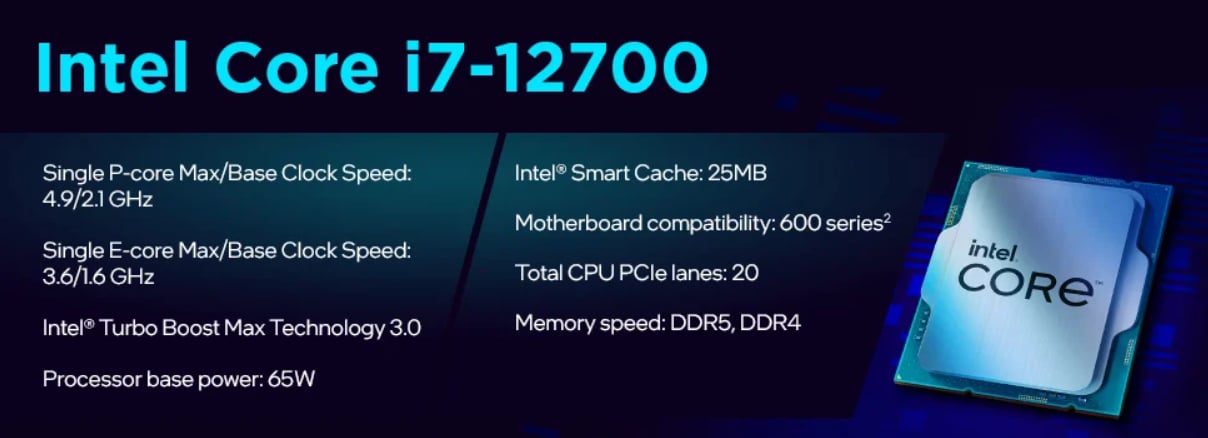
![How to Get a CPU Cooler off of a CPU [Un-stick Glued-On Cooler] How to Get a CPU Cooler off of a CPU [Un-stick Glued-On Cooler]](https://www.cgdirector.com/wp-content/uploads/media/2024/03/How-to-get-CPU-Cooler-off-CPU-Twitter-copy-594x335.jpg)
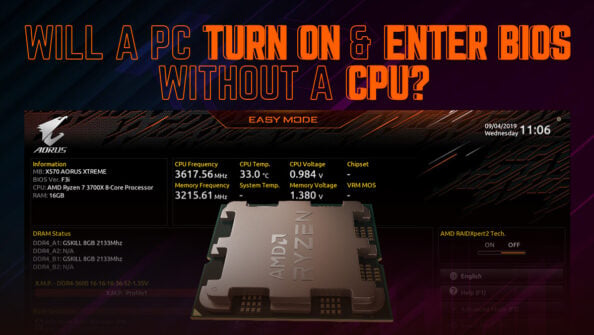
![“Best” PC Bottleneck Calculators [CPU/GPU]: Do they even work? “Best” PC Bottleneck Calculators [CPU/GPU]: Do they even work?](https://www.cgdirector.com/wp-content/uploads/media/2024/01/Best-PC-Bottleneck-Calculators-CPUGPU-Explained-Twitter-594x335.jpg)
![Best CPU for Video Encoding [2024 Update] Best CPU for Video Encoding [2024 Update]](https://www.cgdirector.com/wp-content/uploads/media/2022/02/Best-CPU-For-Video-Encoding-Twitter-594x335.jpg)

6 Comments
8 March, 2023
Nice & easy explanation
10 March, 2023
Thanks glad you liked it! Let me know of any questions you might have.
Cheers,
Alex
14 August, 2022
F series are a pain in the ass. no one should buy them.
i remember, the newbie i was, buying one of them and using it for some time.
on day at midnight my nvidia graphics card burned and the display went black like a bitch.
whereas i was in extreme need for my PC tomorrow, preparing a presentation for campus.
i just lifted that CPU and tossed it in the dustbin.
the day after i had a new installation with an i5 -8600K CPU, bought a new graphics card and from that moment everything’s fine even gaming is smooth.
bottom line:
if you want to throw money, buy F series.
14 August, 2022
Interesting, thanks for letting us know!
Cheers,
Alex
9 July, 2023
Was your nvidia getting burn because of that failed “F” cpu or failed nvidia?
9 October, 2023
A bit late to the party, but your unfortunate experience isn’t really a reason to never buy F series (there are other reasons, but not this one). You have to buy another GPU anyway and the GPU’s failure isn’t related to the processor being F or not.
However yeah, one should know and be prepared, hopefully this article will help “newbies” avert such tragic surprise.
Keeping a spare old GPU in its box “just in case” is a good habit, and ends up costing less than the difference F vs non-F, and can always help a friend out if they need a spare too. I personally got a GEForce GTX660 2Go for 25€ (could have gotten something cheaper) sleeping in its box, this way I have no worry about a GPU failure making the computer unusable.
If your space is very limited/if you are minimalist/other reason however, yeah go for the pricier integrated graphics.